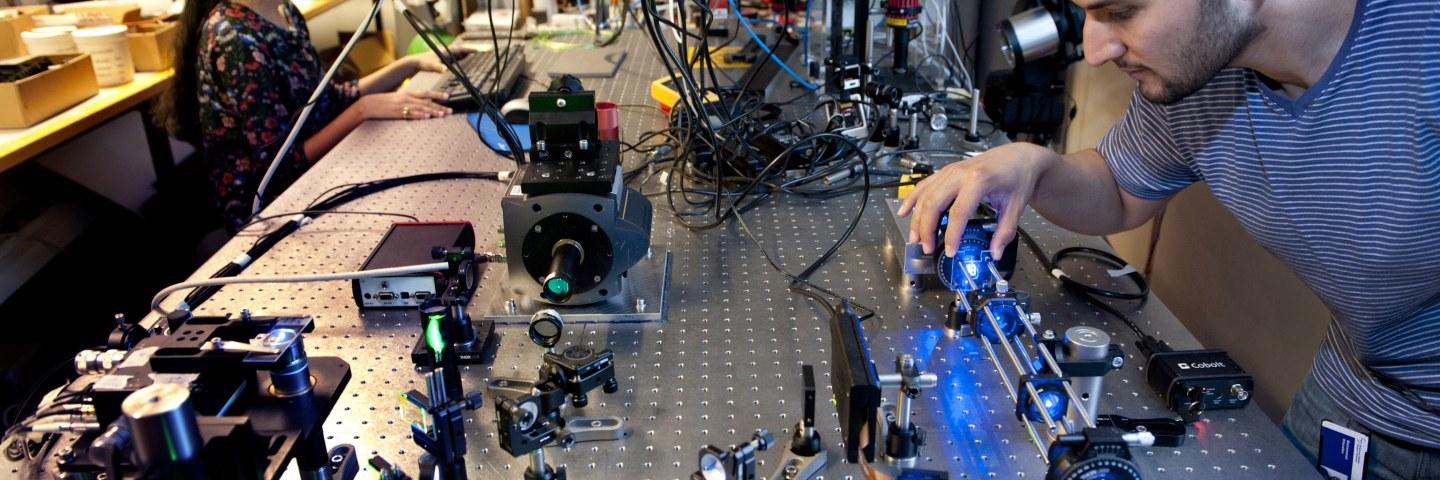
Research infrastructure
Photonics measurement and testing
Tampere University
Hervanta Campus
AddressSähkötalo, Korkeakoulunkatu 3
Tampere
Photonics measurement and testing covers a large variety of infra ranging from fundamental research to characterization of device level photonic components. Resesearch categories connected to the infra are:
- Characterization of photonic and optoelectronic components
- Fundamental research on nonlinear light phenomena
- Experimental quantum optics
- Nonlinear microscopy
- Nonlinear fiber optics
- Development of Supercontinuum light sources
- Spectroscopic applications
- Litography
- Fiber laser research
- Metamaterials





